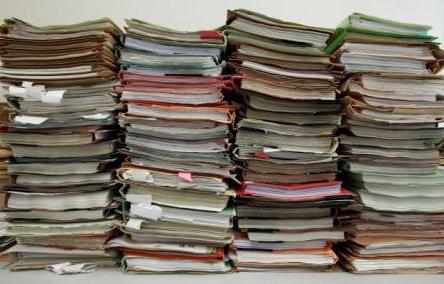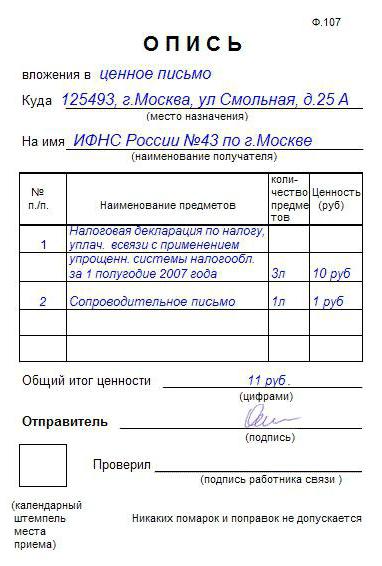The work of any organization, as a rule, is associated with a large number of documents. This is incoming correspondence and the answers sent to it, various orders and statements of employees, technical instructions and accounting reports. All of them require timely accounting and optimization. One of the options for solving this issue is an inventory of documents.
In accordance with the law
The specialist who is engaged in office work at the enterprise knows best what an inventory of documents is. During the year, a huge amount of papers passes through it. All of them are important, and each individually plays a special role in solving this or that issue. It is simply impossible to throw away such baggage, since each of these papers has a certain storage period during which it is valid and may well come in handy. Such documents are usually deposited in the archive, where they are all the time.
At any time, they can be taken from there and used as intended. In the Federal Law “On Archival Affairs” of October 2004, a list of all possible types of documents and each of them has a specific deadline for which they must be with the owner. But how to take into account the huge amount of papers received for storage? For this there is an inventory of documents. It is compiled by the employee responsible for archiving, and is a compulsory addition to each folder or case submitted for long-term storage.
Sending important papers
The secretary at the enterprise also often draws up an inventory of documents. This does not mean registration of incoming or outgoing correspondence. For this, each secretary has a special journal. There, the moment of receipt or sending of the letter is recorded accordingly, indicating the date, addressee and executive officer. The inventory may in some cases be inside such correspondence.
For example, an organization sends a package of documents to the address. They can’t just be put in an envelope and thrown into a box by sticking a stamp. Where is the guarantee that the papers will reach in full? Of course, if these are brochures or simple leaflets, then do not worry. At any time they can be sent again. But sometimes you have to send serious documents at an official request. In this case, in addition to the main securities, a cover letter and an inventory should be enclosed in the package, which will be a list of documentation sent to this address.
Document Transfer
Employees who are involved in contracting know very well what an inventory of documents is. You can easily make a sample of it yourself.
The main thing is that this paper contains all the necessary information:
- The name of the sender is written in the upper left corner, or the company stamp is put.
- On the right are the addressee data (company name and full name of its head).
- Below the center is the name. For example, it will be a “List of documents to be transmitted to the contract”, the number and date of which must also be indicated.
- Further, a table is randomly compiled, in which there must be at least 4 columns (number in order, name of the document, its number and date, number of copies, number of sheets).
- After that, a final record is made about how many documents are transferred according to this inventory. You must also calculate the total number of attachment sheets.
- At the very bottom of the page, a note is made about who transferred and received these papers with the date, surname and position.

This is the most common list of documents, a sample of which is well known to any clerk as postal form number 107. Ready forms can be taken in advance at any post office in order to slowly fill out and check them at the workplace.
Subtleties of archiving
Any employee of the archive is familiar with the list of case documents. It is made during the transfer of securities for storage. This document is not just the contents of a specific folder. It makes it possible at any time to find the necessary information among a huge number of papers.
Orders, reports and other investments are systematized and summarized in a table, which should contain six required columns:
- Serial number.
- Index of a specific document in accordance with the nomenclature.
- Its date (the one indicated at registration).
- Title (order, letter, contract).
- Sheet numbers.
- Note.

The table can be quite large. But in any case, at the very end, a final record should be made about how many documents are listed in it, as well as the total number of pages calculated. Now, looking into such a folder, you can easily find the desired paper by the required parameters without making any special effort.
Features of the inventory
The internal list of documents requires special knowledge and special attention from its compiler. Sometimes design errors result in paper simply being lost in a huge stream of information. Being out of place, she flies out of sight.
For example, for scheduled inspection The tax inspectorate needed a report last year ago, and it was filed with negligence along with other documents. There was a situation in which an employee of the enterprise cannot confirm this or that information provided earlier. Such a misunderstanding may result in a fine for the organization and a punishment for employees responsible for providing information and storing documents. The amount of loss depends on the importance of the data sought. To prevent this from happening, the records of documents must be kept appropriately. This process, of course, is very complex and time-consuming. In addition, it is necessary to take into account the multi-stage and sequence of the procedure.
Personal files of employees
The personnel service of any enterprise or organization is also a section through which many different documents pass. Most of them are accumulated in the personal files of employees.
They are stored in place until dismissal, and only after that are archived. In this case, the personnel officer must draw up an inventory of personal files. It is worth noting that in the legislation of Russia there are no certain rules regarding its preparation. All the rules are taken from the Soviet era. In accordance with them, such an inventory should be a type table of seven columns:
- Number in order.
- Index of a specific document.
- Date.
- Title and summary of the document.
- Sheet numbers.
- Date when the document was included in the file.
- Note for special notes.
At the very end, the total number of documents listed is calculated. All this is done under the signature of the personnel officer indicating the date of transfer of the case.
